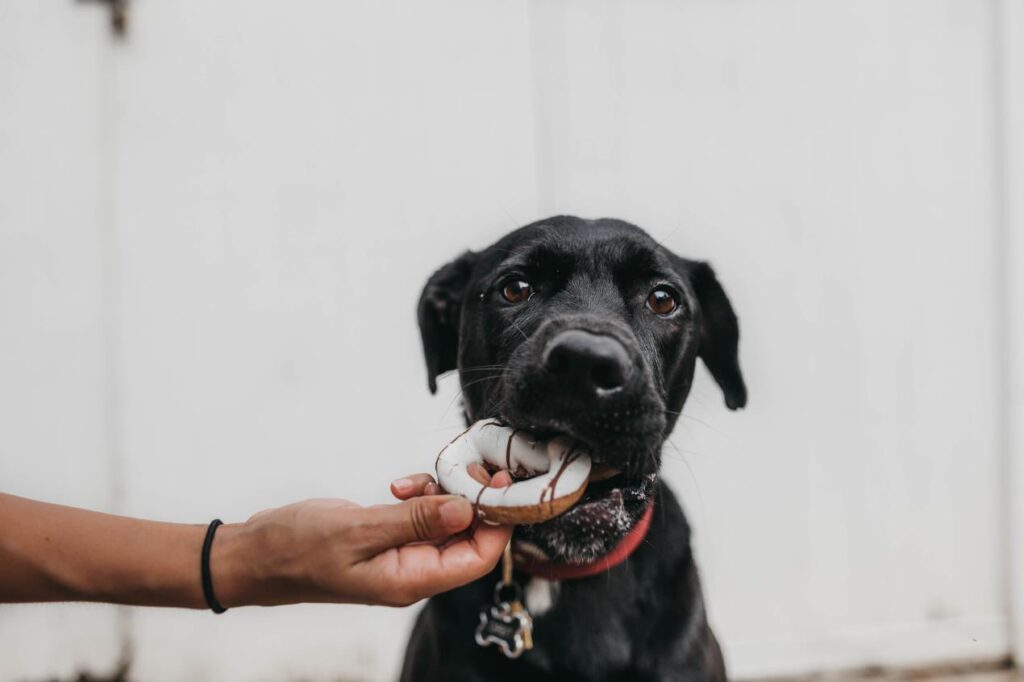Pet Obesity Awareness Day: How to reduce your dog’s weight the healthy way

October 13th is National Pet Obesity Awareness Day!
Healthy eating and exercise are just as important for your pets as it is for you. Considering that 1 in 14 dogs in the UK are considered overweight or obese, it is important to know the facts about how obesity can affect our pets and to understand what to do to prevent it.
Being overweight can have lasting consequences for your pet and can even be fatal. That’s why we’ve asked the team at tails.com to share their top tips to help you help your dog trim down the healthy way and maintain an appropriate weight.
The full content is available below or in a Google document format on request.
How to reduce your dog’s weight the healthy way
As a nation of dog lovers, we can’t help but indulge our pups. But with pet obesity on the rise, a little morsel here and there soon adds up. And if we’re not careful, all those sneaky treats can lead to a podgy pooch.
While many owners use food as a way to shower their dogs with love, it could be doing more harm than good, because overweight dogs are more prone to illnesses and don’t live as long as dogs at an ideal weight. So if you think it’s time your porky pup lost a few pounds, read on for our top tips on dog weight loss the healthy way.
How to tell if a dog is overweight?
All breeds have standard weight guidelines. And while this is a good place to start, every individual dog is different. Rather than the numbers on the scale, what you should really pay attention to is the amount of extra coverage on your dog’s body. To understand if your dog is under, ideal or overweight, vets often use the body condition score (BCS) test.
The test is measured either on a 9 point or 5 point scale, and assesses your dog’s fat levels across your dog’s ribs, tummy and waist. Your dog should have an hourglass figure when viewed overhead and even breeds like bulldogs where many people believe they will be more rounded should have a waist. You should be able to feel the ribs through a little fat covering and they may even be slightly visible in places. And the tummy should tuck up from the rib cage, rather than being a straight line across.
If your pooch is more barrel shaped and you can’t feel their ribs easily without applying a lot of pressure, then your dog is likely overweight. If you’re unsure, your vet or vet nurse will be able to help you and even show you exactly what to look for when it comes to your dog.
Health implications for overweight dogs
Not only does the lifespan of an overweight dog decrease, but it can seriously impact your pup’s quality of life. The extra weight can put added pressure on bones and joints, potentially leading to arthritis in later years. But it can also put your dog’s life at risk, contributing to breathing difficulties, heart problems and diabetes.
Top tips to reduce your dog’s weight
There are 3 key areas to consider when managing your dog’s weight loss in a healthy way.
Dog diet food – Feeding the right diet for your individual dog is the first important step. Balanced meals packed with nutrients, slow release carbohydrates and beneficial fibre will help your dog feel fuller for longer. It’s also important to control portion sizes and feed the exact amount your dog needs to lose weight steadily, and eventually maintain a healthy weight.
Regular exercise – Exercising your dog every day will help burn off excess calories and keep their body healthy. Alongside the right nutrition and portion sizes, a regular exercise routine will help bring your dog’s weight down steadily and predictably. It also gives your dog something else to focus on during the day, by providing mental stimulation – dogs are a bit like humans, they get peckish when they’re bored!
Limiting treats – We know it’s difficult, but cutting out treats altogether is the best approach for healthy dog weight loss. Or at the very least, limit the number of treats and offer healthier options that aren’t high in fat, sugar or calories. Raw vegetables like carrots and cucumber are a good alternative to human food or shop bought treats.
But there could be a medical cause for your dog’s weight gain too. Hormonal disorders like hypothyroidism slow a dog’s metabolism down so they’re no longer burning calories as quickly as they should. Cushing’s disease and other metabolic conditions can also cause weight gain. if your dog is not losing weight or is still gaining despite diet changes, always share your concerns with the vet.
Breeds prone to weight gain
Some breeds are typically more prone to being overweight than others. And sometimes it’s not just a case of a greedy pooch! About a quarter of Labradors have a mutation of a gene called pro-opiomelanocortin (POMC) which controls appetite, meaning they can still feel hungry even after eating a big meal.
With breeds prone to being overweight, it’s important to pay closer attention to your dog’s diet and find the right nutrients and quantities to help them maintain their ideal weight. A few breeds prone to obesity include:
Beagle
Shih Tzu
Cocker Spaniel
Yorkshire Terrier
Bulldog
Pug
Boxer
Dachshund
Rottweiler
Chihuahua
German Shepherd
Basset Hound
Weight management in puppies
Puppies go through rapid growth spurts which means their calorie needs can change over time. Which is why regular weigh-ins are so important during this stage. For very young pups that are less than 4 months old, you should try to get them weighed every 2 weeks as they’re growing so rapidly. For older pups, monthly weigh-ins are a good rule of thumb. Since they grow so quickly it’s essential we feed our pups the right ingredients in the right quantities so they grow into a happy and healthy adult dog.
If a puppy carries excess weight, it can impact their bones as they grow. This can increase your pup’s risk of developing bone problems like hip dysplasia and arthritis as adults. Especially in larger breeds like Newfoundlands, Great Danes, Dobermans, Rottweilers, Saint Bernards and Mastiffs.




